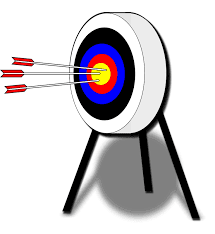How a Beginner Should Choose a Bow for Archery
When it comes to picking out a bow, you should know what
to look for. There are a few factors you need to take into consideration, such
as Let-off percentage, draw length and weight.
Draw weight
When it comes to how to choose a bow for archery, there
are many things to consider. Some of them are related to a bow's performance
and others to your personal tastes. But before you start shopping, you should
have a general idea of what you need.
It's also important to choose a bow that is comfortable
for you. If you are a novice archer, the last thing you want is to feel
uncomfortable while trying to shoot. For instance, you may have too much weight
in your hand, which may cause you to lose confidence and even cause you to
misfire.
Choosing the right draw weight isn't an easy task. The
best approach is to consult a pro and get some expert advice. Alternatively,
you can buy a bow scale and measure the weight yourself.
Draw length
If you are just getting started, you may be wondering how
to choose a bow for archery. There are many ways to do this. You can use a
simple calculator or even visit an archery shop. The best advice is to get help
from an experienced archery pro. This will ensure you don't make any mistakes
and you can learn how to shoot the right way.
The first thing to measure is the draw length. It is the
distance from the deepest part of the bow grip to the nock groove when you are
drawing it. A draw length that is too short will compress the archer, making it
difficult to apply back tension through the shot.
Another measurement is the arrow length. You can get this
by dividing the draw length by two. Ideally, you want to buy an arrow with an
extra two inches.
The best way to determine the exact length is to have an
archery technician at your local shop do it for you. An archery store will use
a special bow and a measuring device to give you a custom length.
Let-off percentage
A let-off percentage is the amount of weight an archer
must hold back at full draw. It varies by type of bow and can be as high as 90%
on current models.
Let off is designed to allow archers to shoot longer and
more accurately. It also helps with back tension. In some cases, a higher
let-off can reduce the strain on the arms and shoulders. But it can cause the
archer to lose control and fail to follow through with the shot.
The amount of let off depends on the model of compound
bow. It is typically around 65% to 85%. However, many hunting and target
archers prefer a lower let-off of around 80%.
The let-off percentage of a compound bow can also be
determined by its draw weight. A 50-pound draw weight requires about 15 pounds
at full draw. On the other hand, a 60-pound draw weight requires about 12
pounds. That means the archer can only hold back ten pounds more at full draw
with a 70-pound bow.
Compound or recurve?
Recurve and compound bows for archery are two of the most
popular types of bows. The difference between them is mainly in their looks.
While recurves look more traditional, compound bows are more modern. Both types
of bows can be used by archers of all ages and skill levels.
Compound bows have more moving parts than recurves. This
makes them a bit more expensive. But they can hold longer at full draw and
shoot more accurately. They also are easier to maintain. Some models have limb
dampeners, which help reduce vibration.
Recurve bows are shorter than compound bows. They tend to
be easier to carry, and a shorter limb will allow you to line up a shot in a
tree better. However, recurves are harder to hold at full draw.
Compound bows are easier to hold in your hand and are
lighter. They also have a let off, which lets you keep the bow at full draw for
longer. You can even fit a limb silencer to your compound bow.
👉This post may contain affiliate links. As an Amazon Associate and member of other affiliate programs, we earn from qualifying purchases.






Comments
Post a Comment